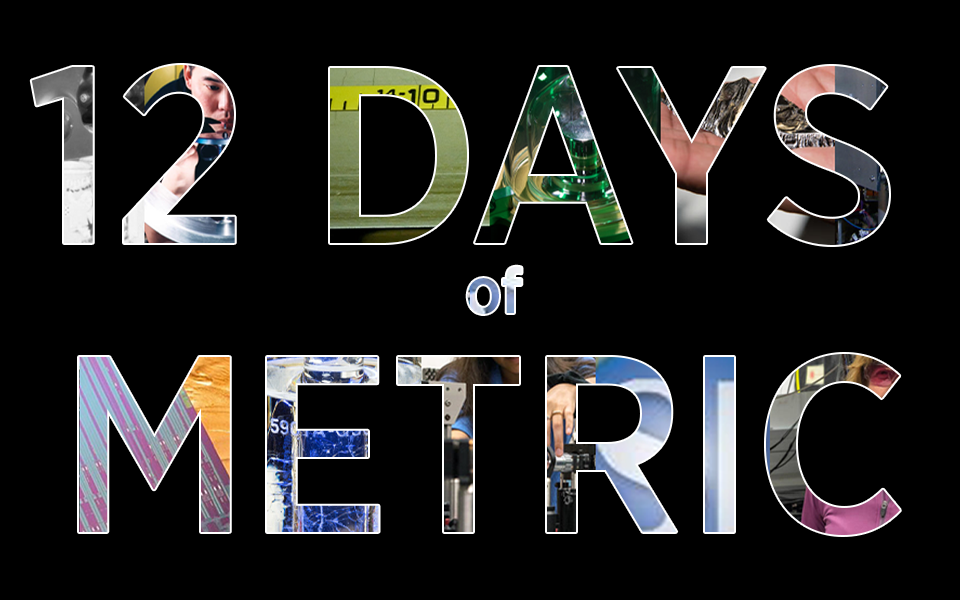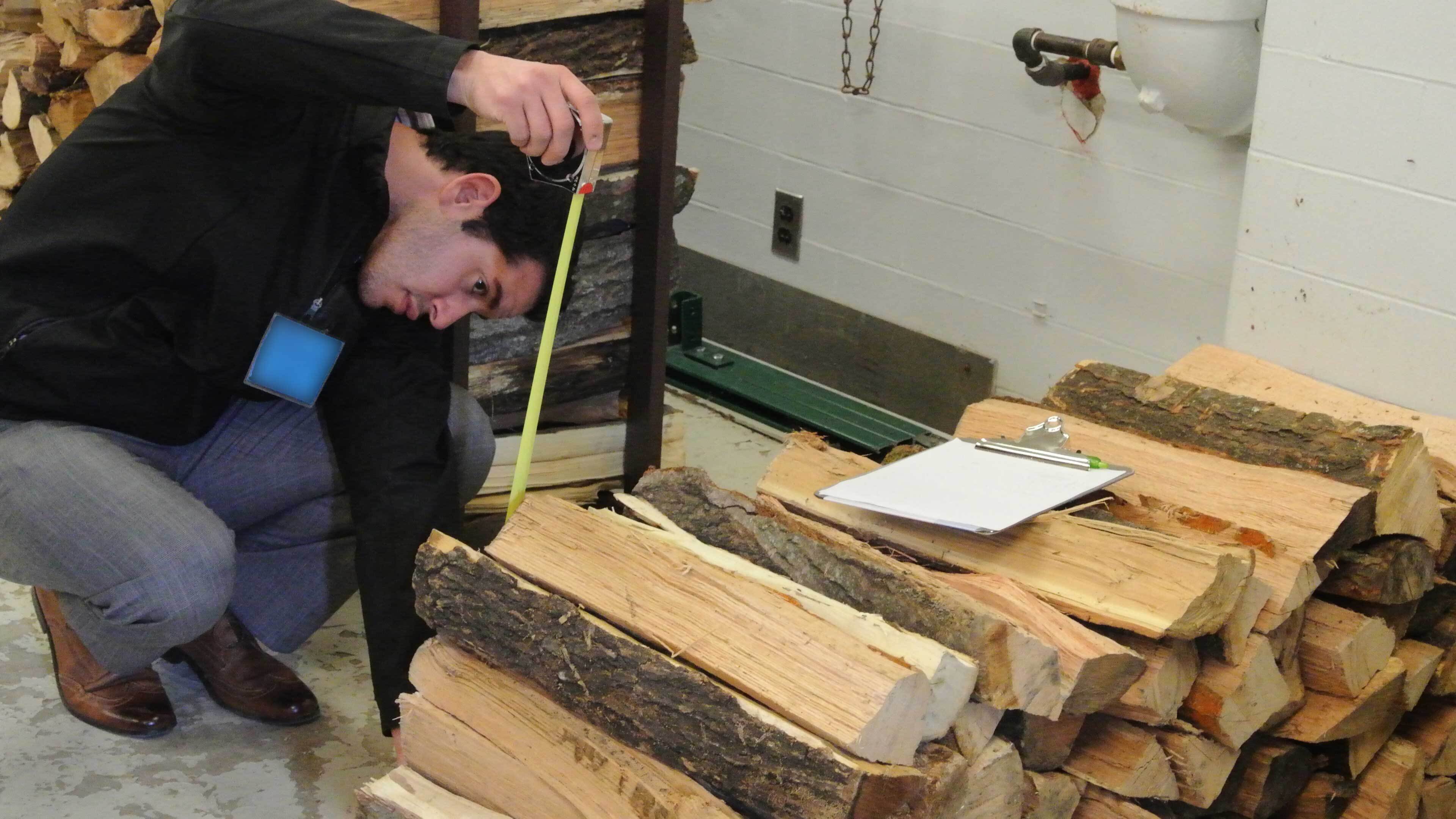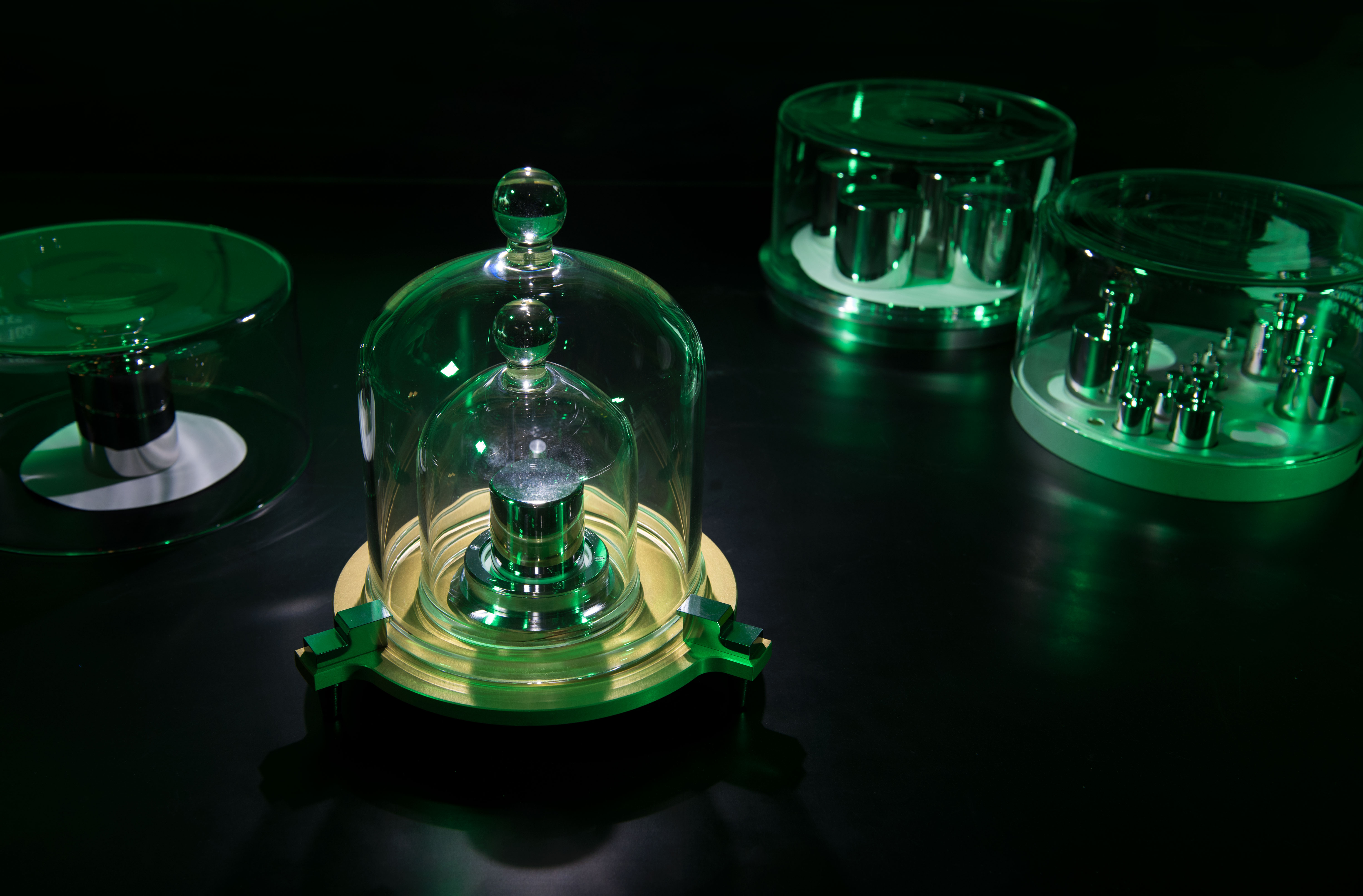Taking Measure
Just a Standard Blog

As we approach the end of 2022, we wanted to share with our readers a NISTified version of a classic seasonal song about a topic that is near and dear to NISTers (and many other scientists) year-round: the wonders of the metric system.
So without further ado … The Twelve Days of Metric.
On the twelfth day of metric, a NISTer gave to me …
Twelve weights inspectors
What’s a “weights inspector”? We’re glad you asked. They’re actually called weights and measures inspectors, and they make sure you get what you pay for at the pump, in food stores and at countless other locations.
There are thousands of these individuals throughout the country whose job it is to inspect and test weighing and measuring equipment and prepackaged products. Their work helps ensure that what you pay for — be it milk for your cereal, gasoline (or other fuel) for your car, carpet for your family room, firewood to warm your hearth, meat and vegetables for your dinner, lumber to build your home, bedding for your rabbit or hamster, and even medications to keep you healthy — is actually what you get.
And NIST helps train those inspectors and provide reference documents that help them do their job.

You can learn more about what these individuals do in our 2018 and 2020 blog posts for Weights and Measures Week. (Yup, there’s even a week to celebrate their work!)
Eleven physics interns
NIST’s Summer Undergraduate Research Fellowship (SURF) provides the next generation of scientists an opportunity to see what it means to practice science. And it provides our NIST scientists with an amazing pool of talent that brings fresh energy and insights to our work.
If you’re curious to hear more from our interns directly, you can see what one of our interns learned about what it means to be a physicist, hear from an intern who spent her summer working to improve small-scale MRIs, or learn about what it’s like to spend a summer at the NIST Center for Neutron Research.
Just to be clear, the SURF program isn’t only for physics interns. It’s for undergraduate students studying in any field that intersects with NIST science. Learn more on our website. (FYI, applications are now open for summer 2023. Spread the word!)

Ten silicon chips
Silicon is a type of material known as a semiconductor and is the most commonly used raw material for semiconductor chips. And according to one of our physicists, it’s a serious contender for realizing the true power of quantum computation. (You can read more about that in this blog post from physicist Josh Pomeroy.) Another good read in this space is a recent blog post about semiconductors. You also can quickly refer to the atomic properties of silicon (and other elements) using this guide.
When it comes to the metric system, though, silicon is perhaps best known for its role in the research that led up to redefining the kilogram and the mole. The Kibble balance, an extremely accurate weighing machine, did a lot of the heavy lifting on the redefinition of the kilogram. However, an ultra-pure, almost perfectly round silicon sphere also contributed to the determination of the Planck constant that was used to redefine the kilogram. It was also used to help in the redefinition of the mole and the calculation of the Avogadro constant, which defines the number of particles in a mole. You can read more about its role in redefining the mole — and the part it played in the kilogram redefinition — in the International System of Units (SI) Redefinition section of our website.

Nine volts through circuits

The volt is the metric unit for electric potential. Josephson junctions, which are devices made from two layers of superconducting materials separated by a layer of atomically thin insulating material, became the authoritative means by which to realize the volt in May 2019.
NIST makes Josephson junctions that offer accuracies of better than one part per billion and don’t need to ever be calibrated. The standards are used to calibrate voltmeters — devices important to the manufacture of consumer and industrial electronics and even the operation of the electric grid. You can learn more about these devices within the NIST on a Chip section of our website.
Eight triple point cells

In 2019, the international scientific community redefined multiple SI units, including the kelvin, which is a measure of temperature frequently used in science (though admittedly not a temperature scale we use in daily life).
We could get technical here and throw out some big numbers and equations, but we’re going to keep it much simpler. As of May 2019, scientists started defining the kelvin in terms of a fundamental quantity in nature known as the Boltzmann constant. Before that, the kelvin was defined based on the triple point of water. Though that method no longer defines the kelvin, it remains a convenient and practical way to calibrate thermometers. This is accomplished with a triple-point cell, which consists of a pressure-sealed glass cylinder nearly filled with water. You can learn more about the kelvin and triple point cells in the SI Redefinition section of our website.
Seven extra seconds
OK, we can’t really give you more time, but we can talk about the second. One of the big news stories this year was about the international scientific community taking a vote to start planning how we can do away with the leap second.
Two other hot topics in the “time” space this year:
- On June 29, the Earth recorded its shortest day since scientists began using atomic clocks to measure its rotational speed. Earth completed its rotation 1.59 milliseconds shy of the 24 hours of time measured by atomic clocks. Learn more about our shortest day.
- The second is undergoing a redefinition. This international scientific endeavor is ongoing, and we’ll have more about that in our blog in 2023. In the meantime, you can learn more about the history of the second and how it’s defined in the SI Redefinition section of the website.

Six tapes for meas’ring
There’s nothing quite as NISTy as a tape measure. Did you know that we calibrate them in a 60-meter-long NIST tape tunnel? I could write more about it here, but I think this video does a better job at the “show and tell” of the tunnel:
Five proving rings
Nope, these rings aren’t golden. But they are important to scientists.
A proving ring is a device used to measure force. It consists of an elastic ring of known diameter with a measuring device in the center of the ring. It was developed by H.L. Whittemore and S.N. Petrenko of the National Bureau of Standards, the precursor of NIST, in 1927, and is still used today. You can learn more about the proving ring on our website.

Four new prefixes
In case you didn’t hear, we have four new metric prefixes to help us measure REALLY BIG and really small things:
- Ronna (R) refers to the use of 27 zeros after a first digit — or 1,000,000,000,000,000,000,000,000,000.
- Quetta (Q) equals 30 zeros.
- Ronto (r) is the inverse of ronna, making it 0.000 000 000 000 000 000 000 000 001. (We've added spaces between the zeros to make it easier to read, per NIST’s SP 811 publication.)
- Quecto (q) is the inverse of quetta.
Three kilograms
Yes, even with the redefinition of the kilogram so that it’s based on a constant versus a physical object, kilograms themselves are still useful and being used.
If that’s the case, you may be wondering why we even bothered with the redefinition. The big advantage is that the new definition provides us with the capability to more accurately scale measurements from the quantum level to the massive sizes of galaxies. This is especially important to pharmaceutical companies that now have a measurement unit that is smoothly scalable down to the level they need for better drug design and study, with far less uncertainty.
The redefinition was a pretty big deal a few years ago. So much so, that multiple NIST scientists talked about it in our blog. So if you’re interested, you can read about some scientists’ “betting” about the outcomes, how the redefinition helps industry, and one scientist’s personal journey with the SI redefinition.
(Oh, and to my brother-in-law who keeps telling me the “no longer needed kilogram” would make a great holiday present … sorry. I won’t be able to make that happen.)

Two spectrographs
We all know that space = cool, right? So we had to include an item that speaks to NIST’s work in the cosmos.
A spectrograph separates incoming light by its wavelength or frequency and then works with another instrument to analyze the resulting spectrum. A few years ago, NIST built a custom-made frequency comb to help a spectrograph precisely analyze starlight at the Hobby-Eberly Telescope in Texas. Our comb can help the spectrograph pick up very faint infrared light from faraway star systems at specific wavelengths that can be the signatures of a planet’s atmosphere.
That’s because a frequency comb contains “teeth” that act like ticks on a ruler that could help measure the wavelengths of this light very precisely. If you imagine light as a wave of equally spaced peaks and valleys, an infrared wavelength of 800 nanometers means that the distance between successive peaks of the wave is 800 billionths of a meter. Our combs help measure these tiny wavelengths accurately.
To read more about NIST’s cosmos-gazing contributions, check out the Measuring the Cosmos section of our website.
(For the record, we considered gifting frequency combs instead of the spectrographs on the second day of metric — because let’s face it, frequency combs are definitely NISTier — but the meter pattern didn’t work.)

And some cesium to trap and freeze
Why cesium? Because cesium is the atom used in the atomic clock that serves as the civilian time standard for the U.S. The clock uses a “fountain” of these atoms to determine the exact duration of a second, which means the cesium atom serves as the basis for the current definition of the second. (And yes, we know that’s going to change. See the section above about the current redefinition efforts. But that’s all the more reason to celebrate cesium while it still reigns supreme.)
You can read up about the history of timekeeping in this blog post and learn more about how we measure time in this How Do You Measure It? piece.

Thanks to NISTer Riley Wilson for coming up with our metric gifts for each of the 12 days.






Strongly advanced in Quantum Science & A.I. T.I.